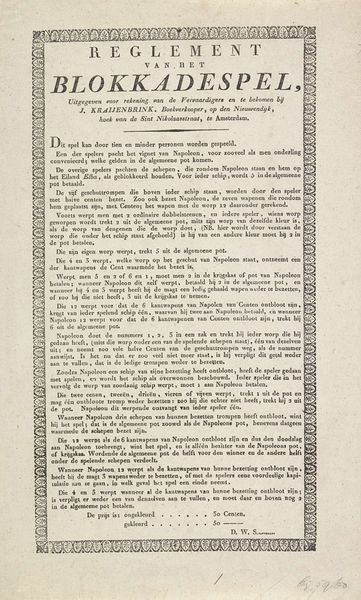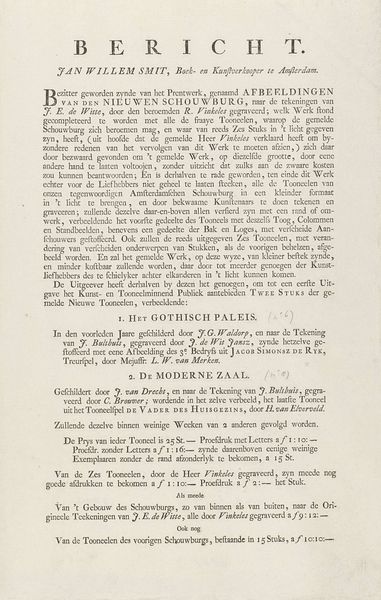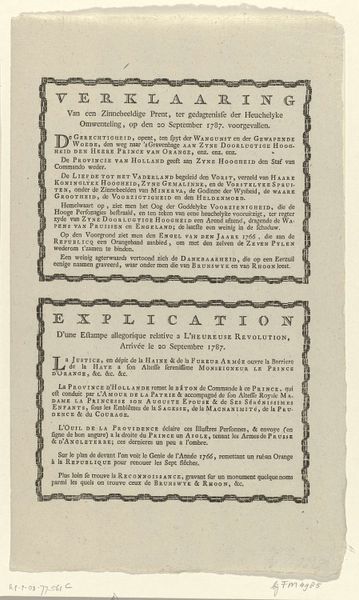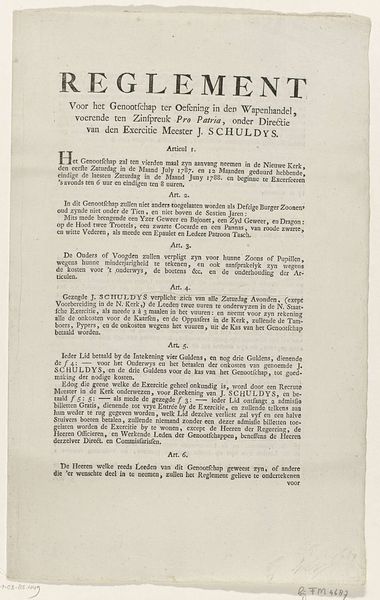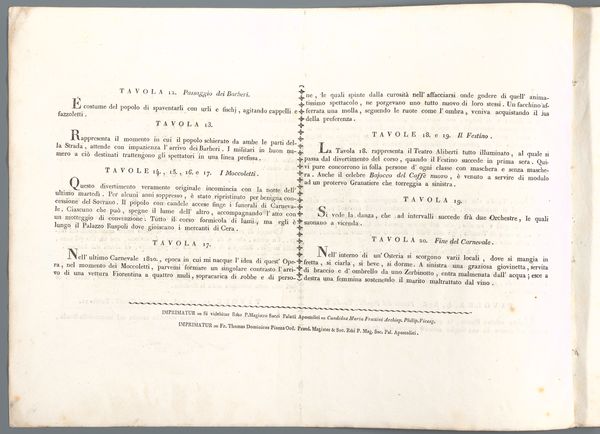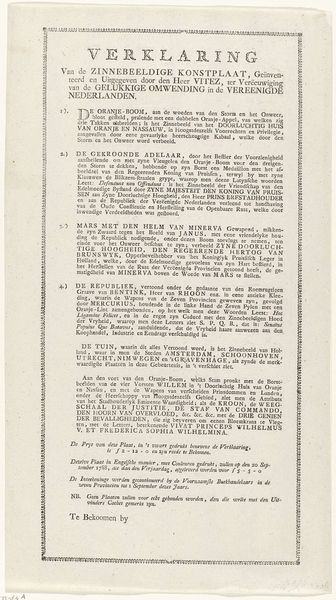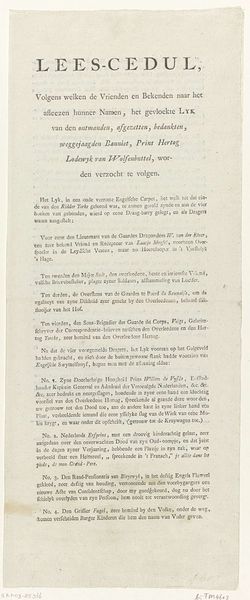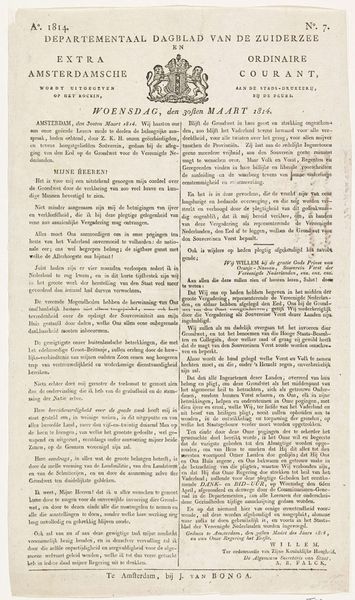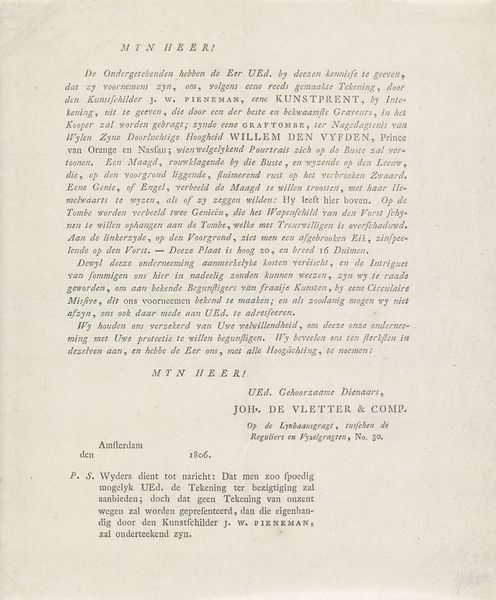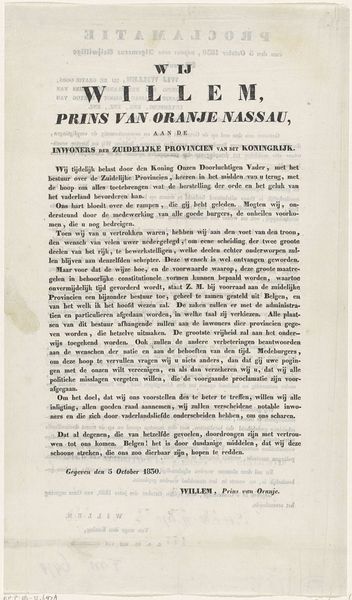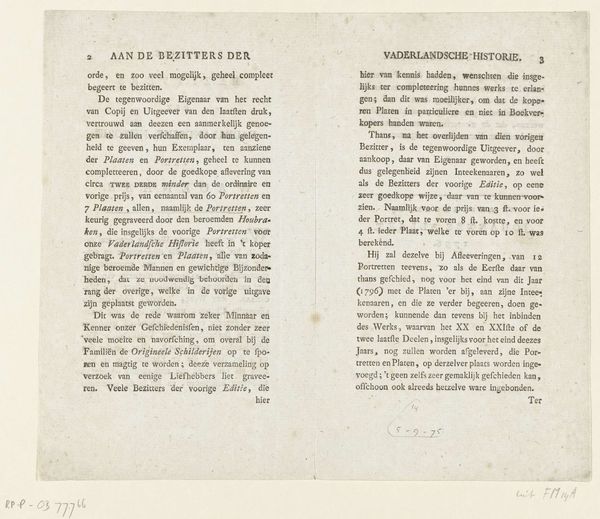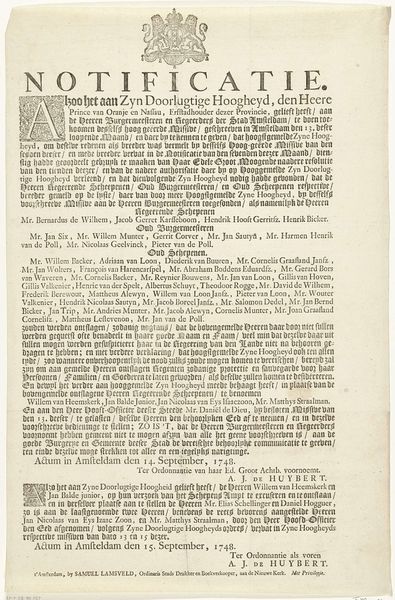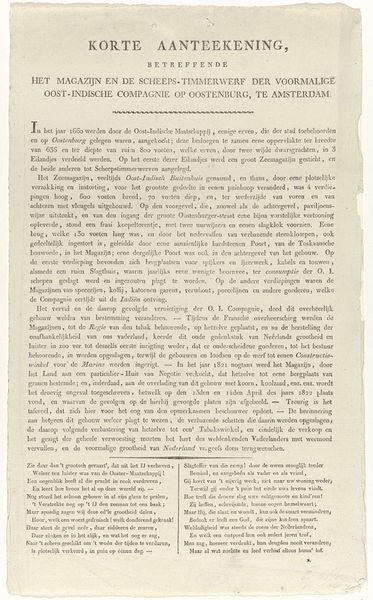
print, paper, engraving
script typeface
neoclacissism
old engraving style
hand drawn type
paper
text
stylized text
thick font
history-painting
handwritten font
golden font
classical type
engraving
historical font
columned text
Dimensions: height 315 mm, width 200 mm
Copyright: Rijks Museum: Open Domain
Curator: Here we have "Verklaring bij de prent 'De Gelukkige Dag,' 1787," or, "Explanation of the Print 'The Happy Day,' 1787." It's an engraving, dating from 1788, currently held at the Rijksmuseum. Editor: My initial feeling is that of a formal announcement, due to the layout resembling a printed notice, the black and white contrast, and what looks like period typeface. Curator: Indeed, this piece functions as a key to understanding a commemorative print about the events of September 20, 1787. It elucidates the allegorical figures and scenes depicted in that related print, celebrating a political shift. Notice the use of both Dutch and French, reflecting the bicultural elite of the time. Editor: The duplication is interesting. I’m wondering what considerations lay behind using both languages, especially considering paper wasn’t cheap back then. It speaks volumes about intended audience and modes of circulation. This isn't just an artwork; it's a carefully constructed artifact meant for distribution and consumption. Curator: Precisely! Consider the symbolism invoked here: Justice, Love of the Fatherland, Divine Providence—powerful concepts meant to legitimize and idealize the political changes. Even the font choices contribute; there’s something classical, authoritative, and almost divine about that thick lettering style. Editor: The sheer amount of text is what draws me in. Engraving these fonts would have taken considerable skill, especially replicating these elaborate letterforms, and consistently throughout. And thinking of paper, the uniformity suggests bulk printing, and so broad distribution as political propaganda. Curator: Yes, we see clear references to historical narrative in the "Angel of the Year 1766" that offered an Orange band to the Republic. The text acts as a mediator between the visual language and historical context. Editor: So the symbolism reinforces the politics and the text explicates that for broader consumption – print as tool, made available to consolidate a particular point of view about events. A manufactured consensus really. Curator: Exactly. It presents a specific interpretation of "The Happy Day," steering the viewer toward an understanding favorable to the ruling powers. Editor: It’s revealing to examine this through the lens of materiality and social function, it underlines that while “art”, it operates firmly within a framework of power, crafted to sway public sentiment. Curator: I agree, seeing how potent symbols interact with textual explanation truly enhances our reading. Editor: Absolutely, investigating the modes of production help me realize these pieces carry complex cultural and political values beyond aesthetics alone.
Comments
No comments
Be the first to comment and join the conversation on the ultimate creative platform.
